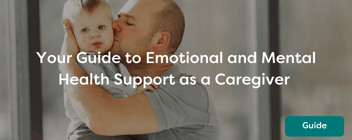Guide: Best Care for Different Life Stages from Prenatal to Adult Care
Needing care and caregiving are two wildly underrated topics in the United States alone. Care is needed at almost every stage of life. Whether it’s you who needs the care, your child, or an elderly relative, each stage of life and the care we receive during it, matters.
Often, the cost of care is based on a family’s own ability to pay. This often leaves an inequitable distribution of quality care to folks that earn lower incomes. Despite the inequity in the care system in our country, people still need care. Pregnant women still need access to women’s health, prenatal, and postpartum resources. Parents need access to affordable and quality child care opportunities. And advanced aged adults deserve to age with dignity as they learn to live their life with assistance.
Each stage of life we enter demands a different kind of care. Here, we’ll map out those types of care and the caregiving options you have. While caregiving needs look different for every family, tools like Helpr connect families with quality caregivers based on the criteria they select.
Prenatal and Postpartum Care
Bringing a child into the world is a heroic act. Both moms and dads deserve gold medals in patience, understanding, and learning as each baby that comes into the world is unique and different. This often means that the type of care needed for each pregnancy can vary.
Prenatal and postpartum care is crucial for moms and dads. Having access to care, outside of their labor and delivery often sets families up for success. Here are some examples of prenatal and postpartum care to invest in for your family.
Doulas & Birth Partners
Doulas are trained to advocate for families during labor and delivery. While healthcare professionals are often attentive and kind, their job is to safely deliver that baby. A doula can be a great option to help your partner during the birth process. They can help with comfort techniques, education on quick decisions that need to be made during birth, and they can even help with family dynamics and boundary-setting if needed.
Lactation Consultants
Breastfeeding isn’t for the faint of heart. Especially with a firstborn. Both the baby and their mom are learning how to navigate breastfeeding, so having a lactation consultant on your care team can help new parents understand and succeed with breastfeeding their children.
Chiropractors and Physical Therapists
No matter which way you slice it, birth is painful. Whether a vaginal birth or C-section, both recoveries can benefit from having chiropractors and pelvic floor physical therapists as a part of their care team.
Postpartum Doula
Much like a birth doula, a postpartum doula can help families navigate that precious time after a woman has given birth. It’s a sensitive time for everyone, so understanding what is considered common and what are signs of a postpartum mood disorder is paramount. A postpartum doula can support a family in this and many other ways. From nutrition after birth to how to best bond with the baby, postpartum doulas are great caregivers.
Childcare
After a child is born and if both parents decide to work, then childcare is needed. This can be an extremely sensitive and stressful time for parents. Understanding what fits within your budget and what is best for your child is a balancing act that takes a lot of research and time. But here are some options for childcare that are both traditional and a little outside of the box.
Nanny/Mother’s Helper
Nannies are amazing. They’re an extended part of your family and provide individualized care to your children. But the cost of personal in-home care is high. Depending on where you live nannies can charge anywhere between $15-30/per hour. You’re essentially paying a salary for another person.
Childcare Center
Traditional childcare centers are more affordable options. The government also offers subsidies for lower-income families that need access to care as well. Child care facilities often have long waitlists for children to enter, so it’s important to start thinking about them early on. Especially if you know you’ll need the childcare.
Nanny-Share or In-Home Child Care
A less common, but equally impactful option for child care can be nanny-shares or in-home childcare facilities. This is where families essentially share the cost of a nanny with each other. Some nannies have centers within their homes and limit the number of children they’ll care for. They’re great options for community building and individualized care and relieve some of the cost burdens for families.
Advanced-Aged Adult Care
Nearly 3 out of 4 adults are not prepared for long-term care as they age. Unlike care for newborns or children, adult care is often overlooked. Childcare is a known essential type of care, but if we’re lucky enough to age, we’ll eventually need life as we get older.
Adult care can look different depending on the reason for care. There are many types of caregivers that support advanced-age adult care both at an assisted living facility and in-home. Here are some options for adult care, both long-term and during the day.
Assisted-Living Facility
An assisted living facility or nursing home can be an option for you or your loved one if you don’t live close to family. It can also be a good option if your home is inadequately set up for long-term care. This can look like bedrooms being upstairs or inaccessible bathtubs. Nursing homes can be a great network of care and support through advanced age care.
Adult Daycare
Adult daycare is another option for a spouse or family member that takes care of an elderly relative in their home. Adult daycare is an option for adults to experience quality care during the day, but have a home and additional care to go to at night. Adult daycares are great options for people who suffer from memory loss or thrive in social situations.
In-Home Care
Many adults prefer to age at home. Unfortunately, our country’s social services are not set up for families to afford this type of care long-term. Because of this, it’s up to families and family caregivers to either offer care or pay for in-home care. There are options though, investing in your aging lifestyle while you are young can take the burden off loved ones as you age and offer you the comforts of your preferred home and space as you age.



